The mobile app ecosystem turns 10 this year and with 197 billion app downloads reported for 2017, shows no signs of slowing down. However, the enterprise app market continues to lag. Is it time your business went fully mobile?

(Photo by Lost Co on Unsplash)
The mobile market has seen a notable tip on the scales in recent years, as digital media usage on cellphones finally overtook desktop. Mobile is officially the go-to option: smartphones and tablets now account for 71% of America’s digital traffic.
Hand-in-hand with that shift, we’ve also seen the unstoppable force of apps escalating in the mobile market. Thanks to a focus on user experience (UX) and functionality such as push notifications, apps are a front-runner favorite for consumers over the traditional mobile-optimized website. It will come as no surprise that projections for app downloads are set to reach an eye-watering 353 billion by 2021.
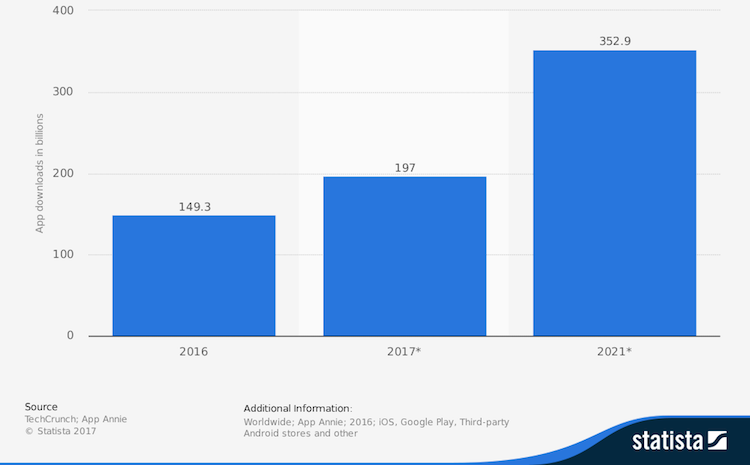
But what about apps for work?
Enterprise apps, by contrast, have been slow off the starting block. Gartner reports enterprise app development continues to lag behind investment in mobile-optimized sites, with resources and access to skillsets causing headaches. A lack of business benefits and ROI justification follow as a barrier.
However, research also shows 60% of workers already use apps for work-related activity and 71% spend more than 2 hours a week accessing company information on mobile devices (Tristate Technology). Those figures are set to rise. Given the shift towards more flexible ways of working and a digitalized, ‘always on’ culture, enterprise mobility is a growing area of focus.
The adoption figures are clear: mobile apps present unrivaled opportunities for engagement with end-users, both within the workplace and out. The good news is, things are slowly starting to shift.
Given the investment required, it’s important to understand just what the value and benefits are -for our business and our employees. When we understand why an enterprise app is essential, we’ll also have a clearer idea of what app, or apps, we should be looking to embed and adopt.

Building a connected digital workplace
#1: Connect and communicate with your hard-to-reach staff
A staggering 78% of organizations still rely on email to communicate with employees. When you consider that up to three-quarters of employees in any given organization are non-desk-based, it’s no wonder that employee engagement figures remain stubbornly low and reports of isolation, loneliness, or disconnect are escalating.
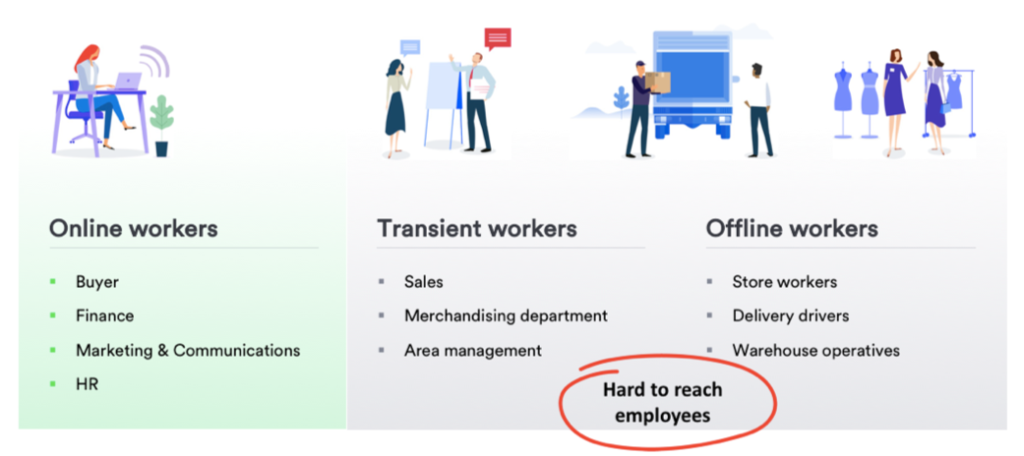
While some of those staff will have access to devices – for example, remote workers, telecommuters, or sales staff on the road attending meetings – there is a large proportion who won’t have easy access to a computer at all. Some may not even have a corporate email account.
A company’s internal communications app can help build those all-important bridges and connections to your business, creating a virtual culture even for those who typically face isolation and disconnect. Research has shown companies report a 47% improvement in internal communications with the support of an enterprise app; there is also a 23% increase in employee satisfaction.
Top-down updates from management or internal communications teams can be used to distribute business news, updates, events, or policy; colleagues can share blogs or news; social interactions such as liking, sharing, or commenting on content also enable individuals to build connections and instill a sense of belonging.
Even at the most basic level, an enterprise app with a centralized People Directory ensures dispersed employees can find and connect with their colleagues; identifying the right person to support with their roles, even if they never meet face-to-face.
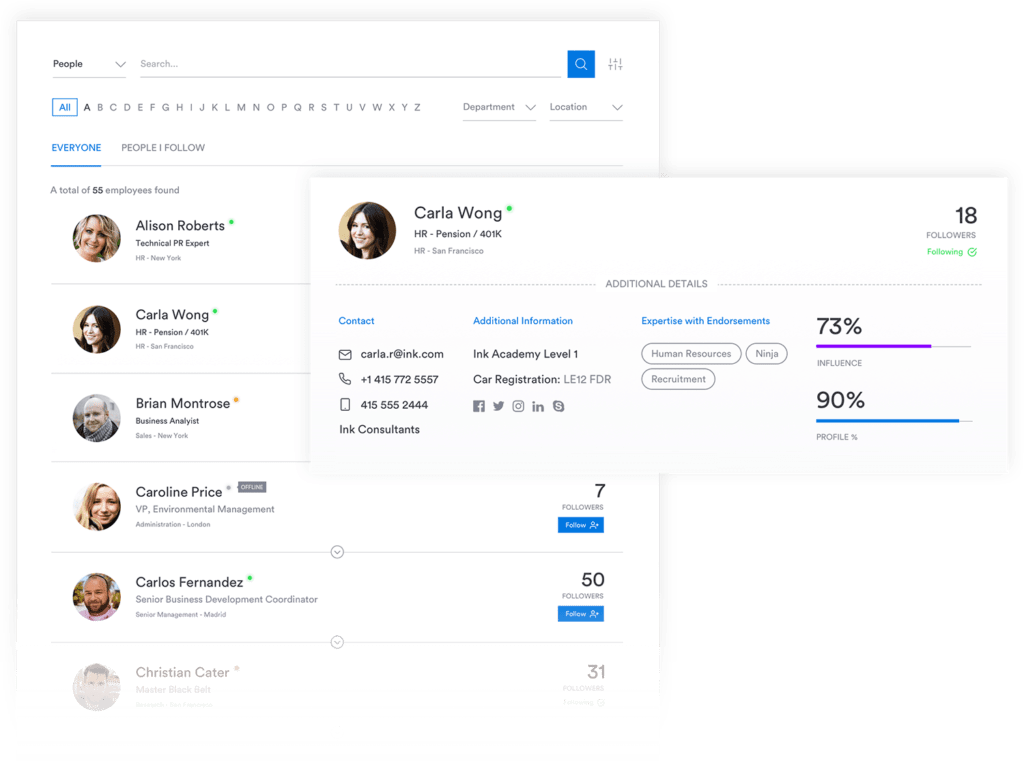
#2: Overcome ‘app fatigue’ and improve adoption
While enterprise app development may be slow, that’s not to say the market is completely devoid of options. Ironically, the very opposite may be true.
Let’s consider, for example, the Office 365 suite – Microsoft’s subscription-based offering, which continues to dominate the enterprise market as the productivity package of choice. A suite of over 20 applications covering everything from Mail, Skype, and Yammer to Word, Excel, Powerpoint, OneNote, and more, Office 365 now offers a range of mobile apps aligned to its applications.
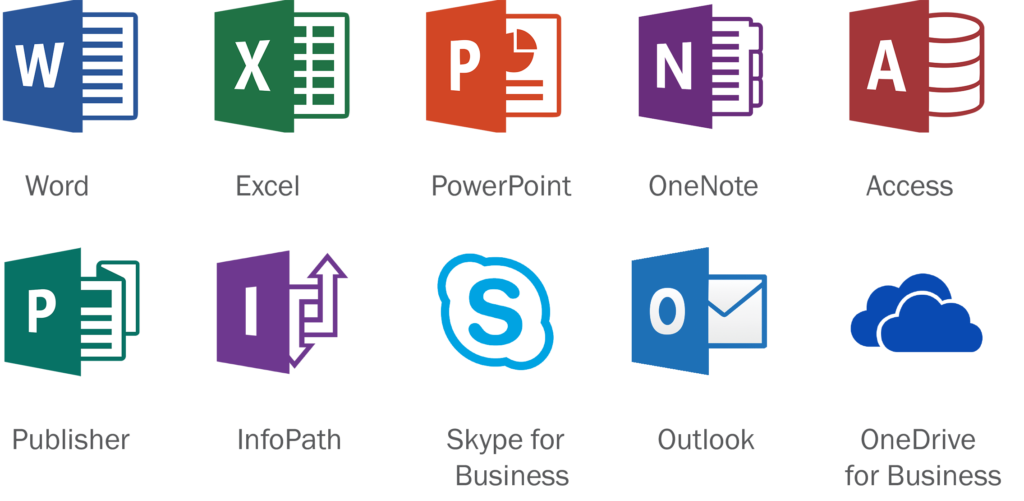
Pushing employees to adopt mobile business applications is a common barrier for internal communicators and management alike. When staff are facing the reality of requiring five, 10, or even 15 apps to fully capitalize on their organization’s mobile experience, it’s no wonder many shy away from clicking the ‘download’ button. Given that 40% of US employees use their personal devices for work, that’s also valuable storage space many will be unwilling to sacrifice.
While many organizations are responding with enterprise app stores, providing easy access to download every app staff could ever need for their jobs, there’s an argument here for a streamlined solution. A single, tailored, business-specific solution that integrates, or provides seamless access to, those core tools, processes, or information that your employees use the most – without the tech fatigue of downloading several apps – is far more likely to see adoption.

For example, an intranet app can not only act as a sales and marketing intranet to connect field sales teams with colleagues quickly and efficiently; it can also be used to access the latest product brochures or information, using integration with document management systems, or to provide quick-link access or visibility of PowerBi sales dashboards. Forums can be utilized to answer prospect questions or find answers to commonly asked questions. In a single app, employees have access to the essential information they need to do their jobs.
An app that can be white-labeled to your business brand, rather than that of a third-party application, is also likely to see greater adoption amongst staff. A sense of ownership and identity increases engagement, helping individuals connect to the app and its purpose.
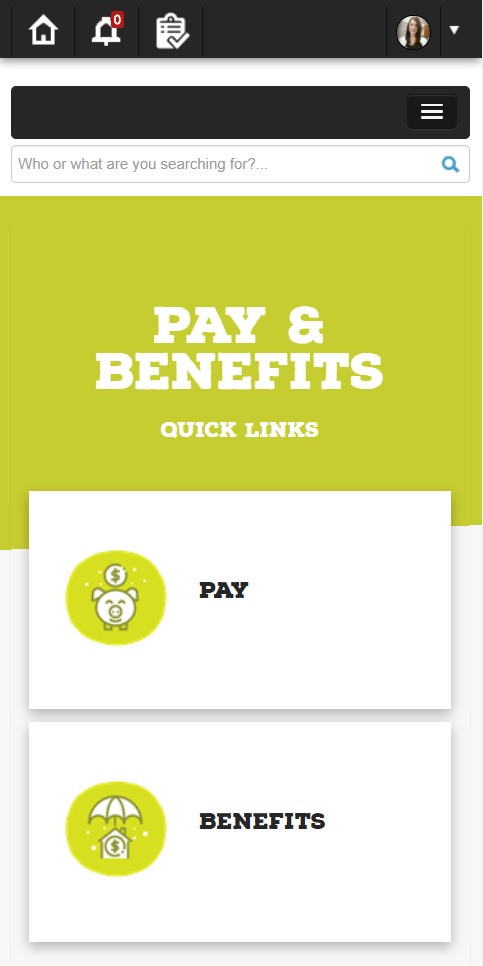
(US retailer Sheetz has their Interact intranet app customized to their brand and white labeled in the app store, making it easily recognizable and engaging for staff.)

Building a connected digital workplace
#3: Cater for technology-led generations in the workplace
The workplace demographic is continuing to shift, and the newest through the door have been raised in a technologically advanced landscape.

Expectations of workplace tech are high amongst the Millennial generation and the newer Gen Z; 42% of American Millennials say they’d likely quit a job if workplace tech didn’t meet their standards, and 81% of Millennials say the technology available influences their decision to take a new position (Future Workforce Study, Dell).
However, they aren’t alone. The majority of our workforce is increasingly confident with technology, and particularly social tools; on average, Gen X – ages 35 to 49 – spend seven hours a week on social media; Millennials, a little more than six hours.
Matching the functionality and expectations created by consumer technology is integral to a strong employer brand and employee experience in the digital workplace. Our always-on digital natives expect to be connected, without restrictions; to enjoy a superior user experience, and to exercise control over their workplace tools and applications.
The resulting rise in ‘shadow IT’ solutions – where employees deploy their software or applications for work use – has been the cause of hot debate, given the security risks and repercussions. An enterprise app not only answers the demand for current, intuitive, and forward-thinking technology to connect staff to their workplace on demand; it reduces the need for alternate solutions that could expose your organization, and its data, to security breaches.
#4: Support a productive, efficient, and accessible virtual office
The underlying benefit of mobile apps is just that: mobility.
As working practices continue to evolve and adapt in line with technology advancements and a demand for greater flexibility, organizations are being forced to find different ways of empowering staff to do their jobs – from anywhere, on any device, at any time. VPN access and the locked-down company laptop are on the way out: the enterprise app is the solution.

(Photo by Mimi Thian on Unsplash)
When staff can access current and essential information on the go in an efficient, intuitive, and self-serviced way, it becomes a powerful differentiator. Access to information and peers creates higher levels of customer service and resulting satisfaction levels. It ensures staff have critical policies and best practice information to hand, reducing dangerous or costly incidents. An enterprise app can facilitate better decision-making, higher levels of productivity, and support staff to continually upskill or invest in their professional development. All of these gains make your organization more competitive and help you stay ahead of the competition.
47% of organizations agree that they require an enterprise mobility strategy to keep up with their counterparts, and ensure that they don’t lose out on new clients or sales.
Imagine if your staff can submit their expenses on the morning commute, double-check an answer for a prospect when out for a casual coffee, read an update from the CEO during their lunch break or watch training videos while waiting for their train home. Flexible connectivity to the office on an employee’s terms can be hugely powerful.
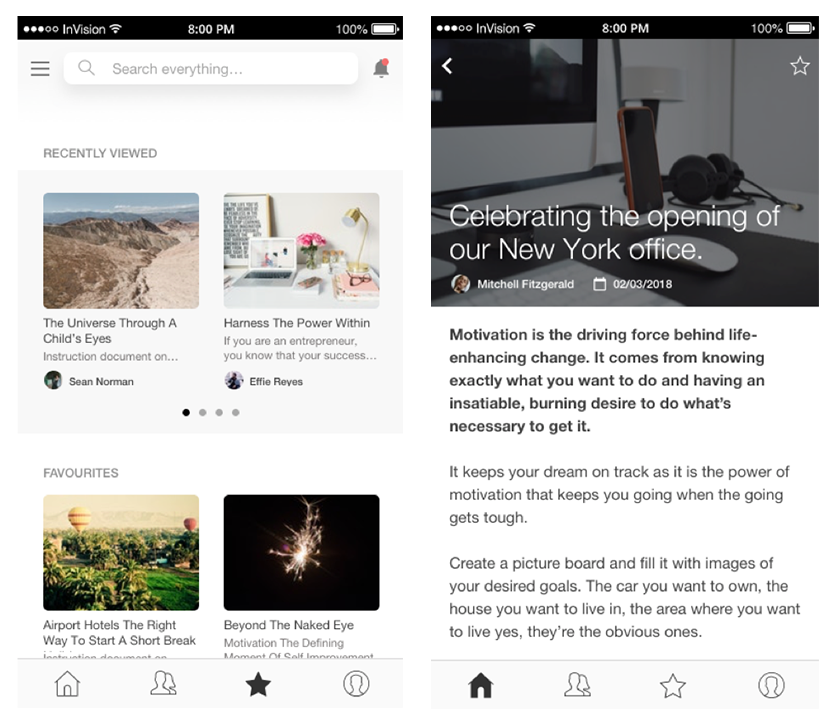
#5: Get stuff read (especially when it matters most)
We’re continuing to struggle to get out of the email inbox. The average worker receives a staggering 121 emails every day, ranging from task-driven internal emails to third-party promotions, event invites, and the inevitable, “whoever has taken my mug from the kitchen can you please return it” internal noise. It’s no wonder internal communicators face a never-ending battle to break through and get critical information read.
In an age in which our attention has become the most contested currency available, organizations have never had it harder when it comes to internal communication. The enterprise app answers this challenge in a few ways:
- It’s a largely underused channel, especially compared to email: with less noise, messages are more likely to be seen
- It’s native and accessible, offering an intuitive and easy way for staff to access information – even out-of-hours
- Push notifications, when used correctly, can highlight vital communications or be used to distribute timely and important information
- It can be personalized or tailored; for example, an intranet app will use personas, teams, locations, departments, or @mentioning of individuals to alert them to content relevant to them, moving away from the ‘Reply All’ curse of email
- With social features and a focus on UX, it offers a more engaging, visual, and two-way experience of communication, rather than the text-heavy nature of email
Getting the message through is more important than we sometimes realize. In an emergency or crisis situation, during which communication with staff is critical and timely, the old-faithful email simply fails. By contrast, 90% of SMS messages are read within three minutes; it stands to reason that notifications on a phone are far more likely to be seen and acknowledged, given our addictive tendencies to our cell phones.
So, what app – or apps – do I need?
The digital workplace is continually evolving and we’re now faced with more options and platforms than we know what to do with. The average enterprise has 500 different applications; as providers continue to invest in futureproofing their products, each will come with an app offering. Choosing what makes the cut as part of your corporate technology stack can be challenging.
Each application we have serves a distinct, defined purpose. They’re best-of-breed products, designed to solve a particular problem; they each have a critical role to play in our corporate digital landscape. However, just because each can be downloaded as an app, doesn’t mean they should.
Understanding what your staff needs on the go is a critical first step. Will they be updating spreadsheets or producing Word documents on their mobiles? If you have individuals who operate in dispersed locations, disconnected from central offices, what information would support them or increase engagement? What apps will be used and useful enough to keep staff coming back – given that 1 in 4 apps are only used once, and then deleted?
An internal communications or intranet app that offers integration with critical business applications will serve as a mobile homepage for your digital workplace. From a single app and location, employees can:
- Access tailored and relevant information
- Connect with colleagues quickly and easily
- View fresh content and messages, both formal and informal, helping to integrate them into your organization’s virtual culture
- Enjoy a streamlined and UX-focused experience of their digital workplace with quick and easy access to vital applications or platforms, such as your HR system, payroll, or CRM
- Receive important and timely communication, essential in an emergency or crisis situation
- Self-serve critical business tasks on the go, whether this be a submission of expenses, checking a roster, or ordering a new uniform
and much more.
So, why have several apps when one can work intuitively and seamlessly with your existing technology stack?





